The Great Canadian Beer Festival, Canada’s longest-running annual beer festival, takes place every September in Victoria, British Columbia. Nearly 10,000 people, cup in hand, swarm the grass fields of Royal Athletic Park for two days of the best in B.C. brewing. Standing front and center since day one is co-founder and festival chairman Gerry Hieter, an impactful figure in British Columbia’s craft beer revolution.
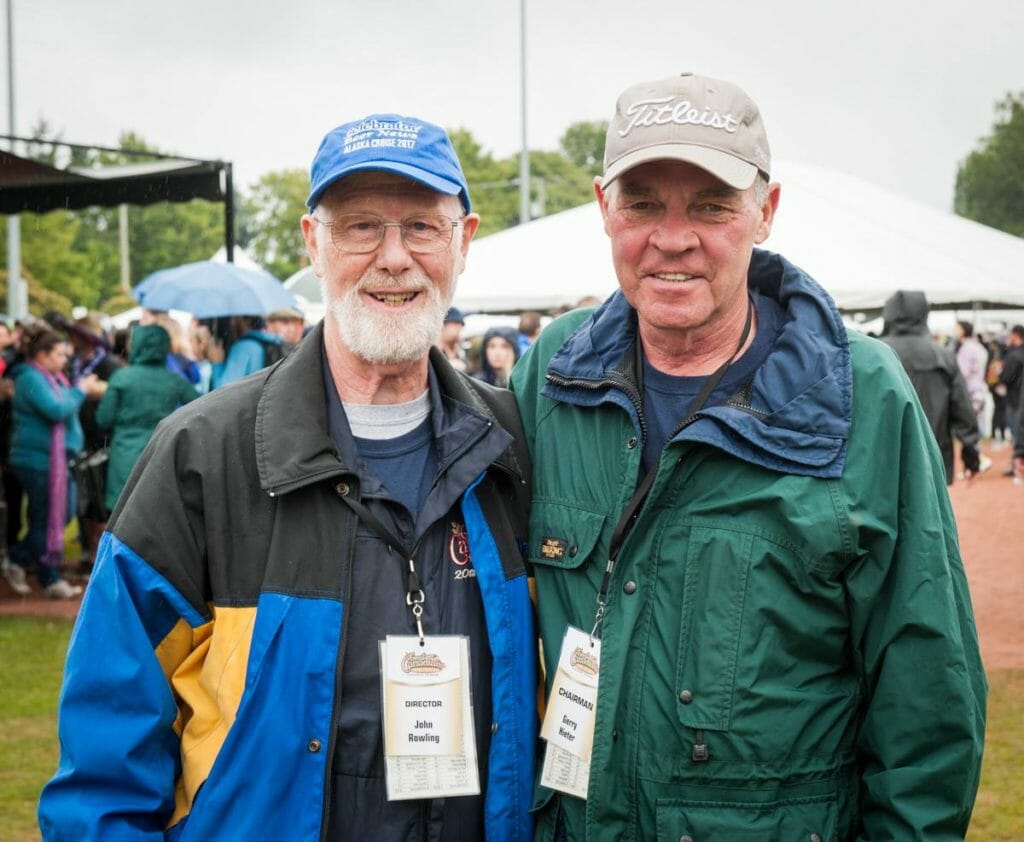
Welcome to Gerry’s house. I did not expect that the headquarters for what has been described as a “bucket-list beer festival” would be a modest two-story residence in the Victoria, B.C. suburb of Esquimalt. [Why has no Victoria brewery created an Esqui Malt Liquor yet? –Ed.]

Hieter and GCBF Operations Manager Craig Peterson greeted me warmly as I arrived at the flat-roofed house, situated down a side street populated with more grazing deer than vehicles. Handshakes all ‘round and I was led downstairs into rec room-turned-office, past window sills with vintage bottles and walls lined with posters of past festivals or vintage serving trays; I’m told that the rest of the collection is on display at the Drake. We had arranged a small window of time to chat before their preparations continued for this year’s Great Canadian Beer Festival.


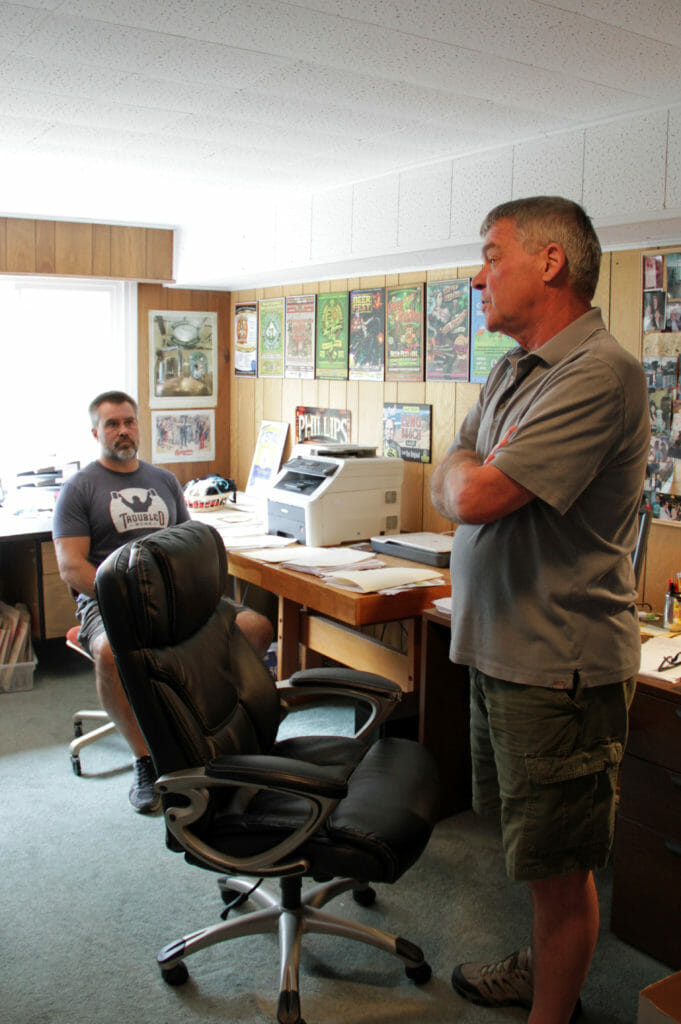
Hieter’s story—like many who enter the beer business—started with homebrewing.
“Homebrewing is a curse,” he said with a laugh. “My first batch of beer was really good. It was an extract lager with extra hops thrown in for good measure. Everybody who came to my house just loved it, and it seemed I had a good ability to make beer.”
His path led west in 1981 when he moved to Whistler, British Columbia. The Longhorn Saloon had just opened, and Gerry was hired on as manager. Craft beer—in name or in bottle—did not exist there yet, but there was an interest in local beer.
“People would come in from the States asking for local beers,” Hieter said, “so we gave them Kokanee or Canadian. That’s what they wanted.”
However, Hieter was aware that better beer existed in B.C., noting that Granville Island and Okanagan Springs were already brewing high-quality lagers. After begging and pleading with the local liquor store, these beers were ordered in and made available for locals and tourists to enjoy. It was a start!
Hieter links his “A-ha!” craft beer moment of this time to beer from the nearby Horseshoe Bay Brewery.
“Being in Whistler, I would buy Horseshoe Bay all of the time. Because I was there in ’81, I was going back and forth while John Mitchell was setting up his brewery. My first pint of Royal Ale was an epiphany.”
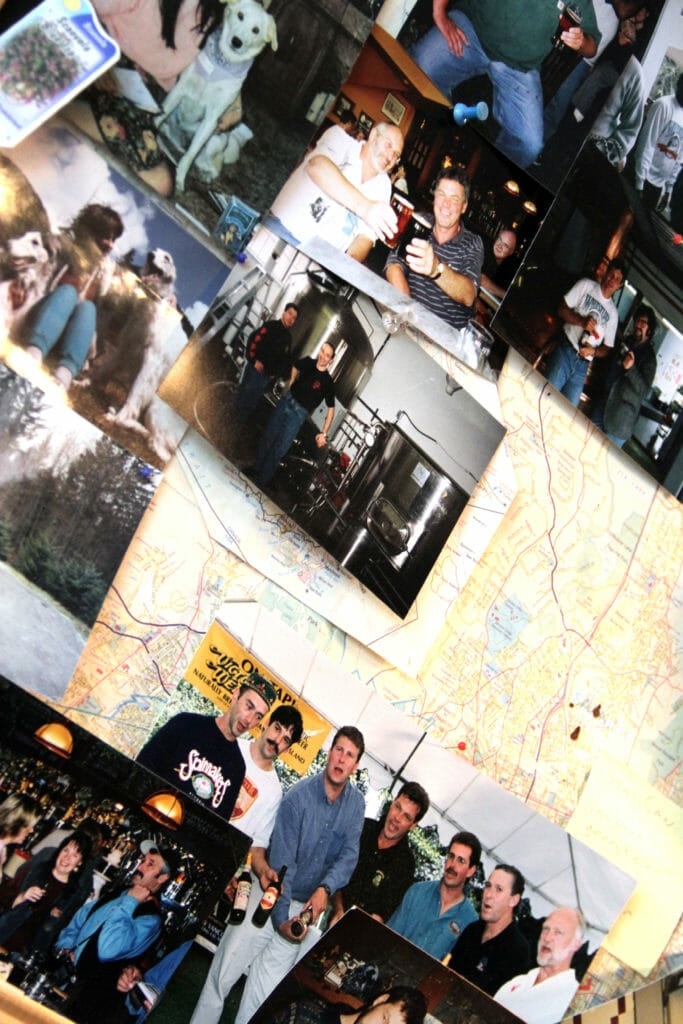
This small first-step in B.C. craft beer took a giant leap in 1989 as Hieter founded the Whistler Brewing Company.
“I borrowed some money from my dad, got a bit of a business plan together, and stumbled into it,” Hieter said. “We went to craft brewers conferences in Portland, Chicago, all over the place. There were a hundred of us at those conferences. Now, there are 7,000 to 8,000 people who go to those things.”
After a few more years in Whistler, Gerry and his wife moved to Vancouver Island and he was hired by Shaftebury Brewing to represent their products on the Island. It was during this time that he began working with CAMRA Victoria and met eventual GCBF co-founder John Rowling, who was interested in tapping into Hieter’s brewing background.
“John wanted to start a brewery with me,” Hieter said, “but I said no: let’s start a festival instead.” The goal was simple: get better beer in front of beer drinkers.
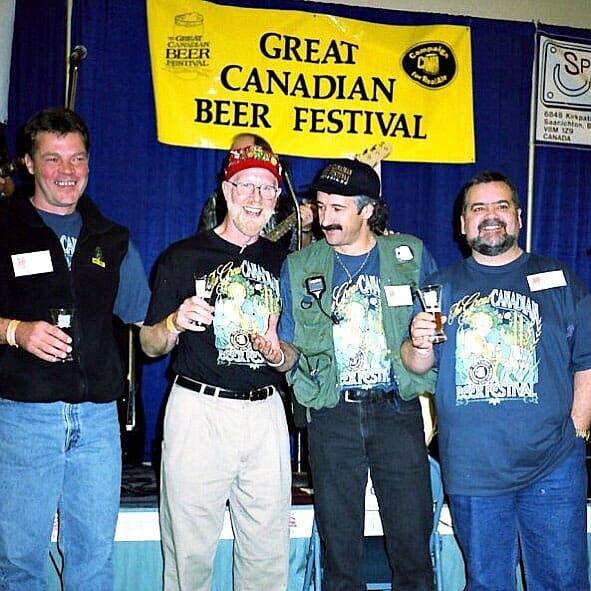
This new plan deserved a substantial amount of research, so they attended established beer festivals in Colorado, Oregon, and Washington, noting the pros and cons of each event. In October 1993, with support from CAMRA Victoria, the first Victoria Microbrewery Festival was held. The following year, the Great Canadian Beer Festival name was adopted. The name worked out, but Hieter was not the biggest fan.
“Victoria is probably the worst city in all of Canada to hold something called the Great ‘Canadian’ Beer Festival because of the difficulty in getting beer shipped here from across Canada. So, we’ve concentrated on the Pacific Northwest for a long time. Washington, Oregon, and California breweries love coming here.”

Two of the biggest evolutions of the festival were the location and participant attitudes.
Back Then: Indoors with Bellowing Boors. For the first ten years, the festival was held at the Victoria Conference Centre. Logistics were simpler when planning an indoor event, but things got rowdier as the event became more popular.
“It was getting stupid,” Hieter said. “People were stepping on each other and you couldn’t get from one end of the centre to the other. It was scary. It was a riot waiting to happen.”
Early on, according to Hieter, there were many attendees who came for the drinking without thinking.
“I did some beer judging at Mondial de la bière [in Montreal]. The festival had been open for 10 hours, and no one would be falling down pissed, stupid drunk. I’d be so envious of that European culture and attitude. I’d come back here, and on a Saturday afternoon, midway through our festival, it was a gong show. We did everything we could to not promote it as that.”

These Days: Outdoors with a Visible Culture Shift. Royal Athletic Park is a multi-purpose stadium with natural grass turf and plenty of room for beer tents and beer fans who exhibit a healthy respect for craft beer and craft beer culture (even if some of the costumes would have you think otherwise).
“Young people have now grown up with craft beer. They come to enjoy the beer. The amount of tokens purchased per person has gone down quite a bit. On a bad weekend, we’ll expel 12 people, over 2 days, from eight-to-nine-thousand people. Half of those were from smoking pot.”
Hieter and the organizers have stuck to their vision on many aspects of the Great Canadian Beer Festival. They still curate the beer list; trend-setting styles will be well represented but there is always room for easy-drinking pale ales and pilsners. They aren’t interested in large stages with full bands, preferring carnival-style roving entertainment instead. There have never been awards or judging, and, Hieter added sharply, “there never will.”
“When I went to the Great American Beer Festival, a long time ago now, [the brewers] were miserable. 100-percent-completely miserable. They were complaining about the way their beer had been shipped, about what time it got there, about where it was, and this and that and they were miserable. If we did that, every brewer that came to our festival would be miserable. So, we decided not to do that.”
He’d rather see the breweries have a good time.
“For the breweries, this is their social event of the year. We treat them like gold and make sure all of their needs are taken care of. They get free ice and water, volunteers to help them. We do brewers receptions every year. We take good care of them, and we care about their beer.”

But Gerry, do you have a good time?
“Not at all. The day-of is like a big house party. You’re the one running around, cleaning ashtrays, wiping up spills. I can’t drink beer because I’m the one holding the license. I haven’t had a beer in 16 years at the festival.”
So why do it?
“It’s a living, now, and it’s the greatest job in the world.”
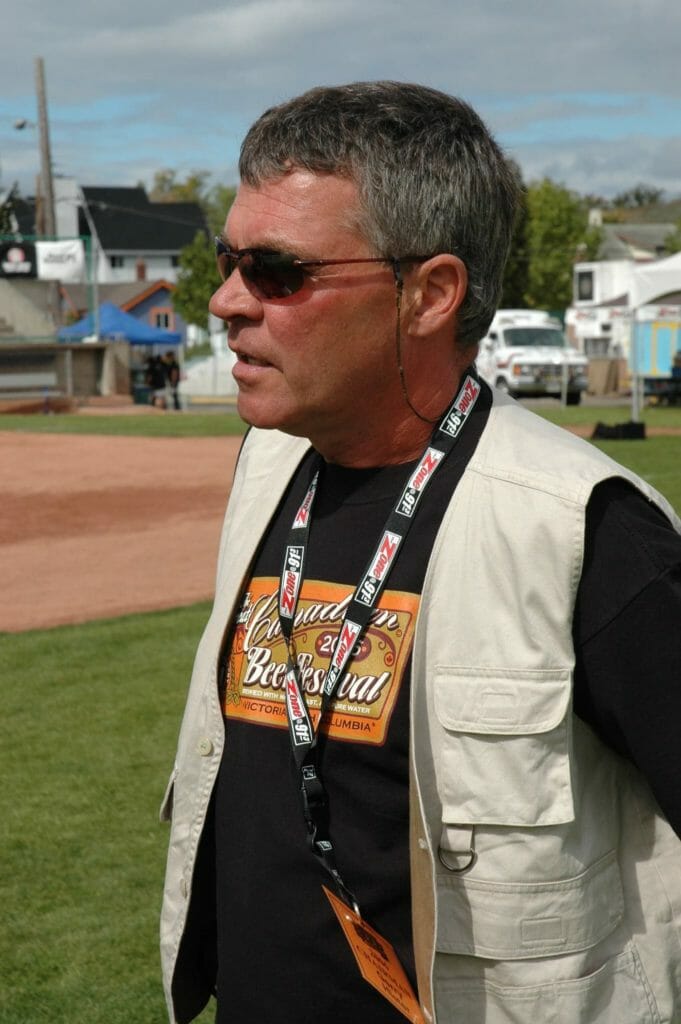
Another big change with this year’s GCBF is the use of a lottery system to choose which breweries would exhibit and serve at the festival. Until this year, it had always been first-come-first-serve, but application day was becoming cutthroat.
“Last year, I sent out applications to breweries at 10 in the morning and by 10:20 I had 100 emails back. The Oregon Brewers Festival does a lottery, and it seemed to make sense. I asked a few brewers about it, and the vast majority of them say it’s the only way to go, the best way to go, the fairest way to go. The ones who didn’t get drawn, we’ll guarantee them a spot next year.”
At this point in the conversation, we’re interrupted by knocks on the door from a few festival volunteers: Matthew Fitterer, a 10-year volunteer, and Lesley Pettigrew, who volunteered for eight years. They’re here to help unearth festival supplies from Hieter’s crawl space, underneath the stairs, wherever things were wedged and cataloged from last year.




I’m invited to join them in the carport for a beer and I asked Fitterer why he’s continued to volunteer for a decade.
“We all get to put in input into the festival and how it operates,” he answered enthusiastically. “We all get treated really well. There’s also a lot of room for advancement.”
Echoing that last statement, Craig Peterson recounts how he attended the first festival in 1993, volunteered the second year, and has volunteered every single year since. He’s earned the role of Operations Manager honestly.
With long-time volunteers and organizers at the helm plus a humble house for headquarters, the festival really feels like it is a family-run affair. It’s no wonder that GCBF is often cited as a reunion spot.
“For a lot of people, our festival is Christmas,” Hieter said. “It’s a great social event for people, people who don’t see each other through the year, but they’ll see each other at Beer Fest. It’s so gratifying.”
Were you successful in your original goal of getting better beer in front of beer drinkers?
“Beyond our wildest dreams,” Hieter said. A quarter-century in and the Great Canadian Beer Festival remains a pioneering star in a Canadian beer craft culture that continues to bloom.
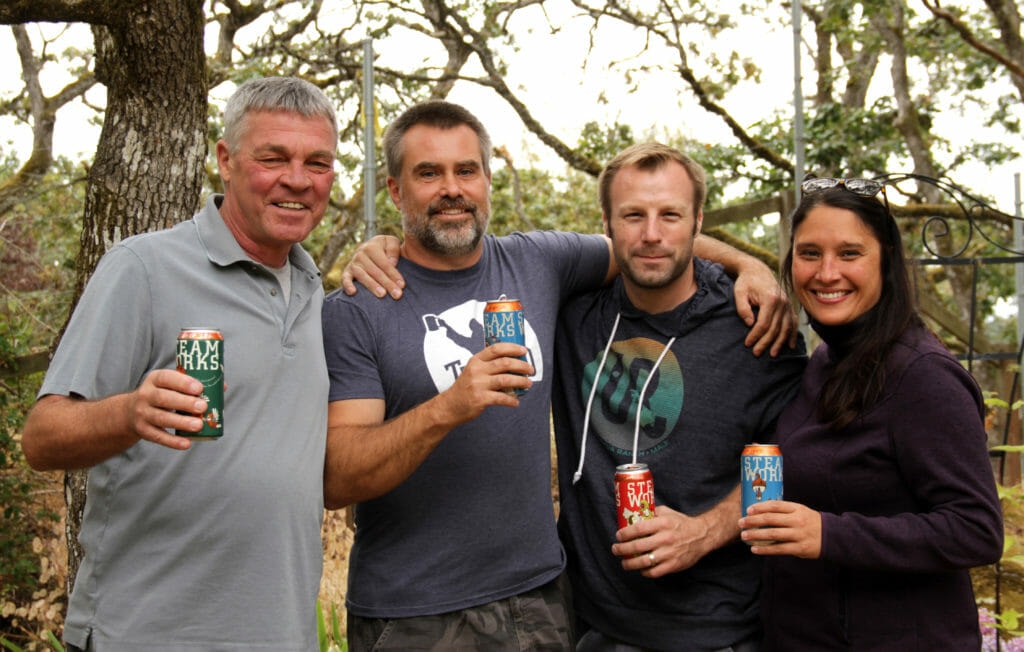
We’re in his backyard now. Each of us in the group is sipping from cans of Steamworks beer (most of the bottles in his fridge are barleywines, but it’s too early in the day for that) and we’re casually standing underneath grey-barked trees older than all of us and beside bright green hops, the bines ambitiously stretching and curling their way up various trestles.
More than 35 years ago, as Hieter told us, beer drinkers had few ways to find and taste any great beer in British Columbia. Now, breweries and attendees alike can go to GCBF and choose from or become inspired by more than 250 amazing beers in one place in less than 24 hours. It’s a dramatic change to have happened to an entire industry in only one generation, and it’s an ode to Hieter’s legacy as one of those leading the charge towards making better beer available in the province. If you’re one of the 8,000 in attendance at GCBF this year, you’re getting a first-hand view of how far we’ve come.
“There are beer bars, breweries, and tasting rooms everywhere,” Hieter said, after taking a sip of an IPA. “You don’t have to go very far to find a good beer in this country anymore.”
The 26th Annual Great Canadian Beer Festival takes place Friday, September 7th (4-9pm) & Saturday, September 8th (12-5pm) at Royal Athletic Park in Victoria, B.C. The festival features offerings from 65 breweries along with food trucks and non-stop circus-style entertainment and buskers. Don’t forget to visit the BC Ale Trail-er, a new feature at GCBF that highlights beer from 10 breweries around BC on the BC Ale Trail. Tickets are available at gcbf.com.







